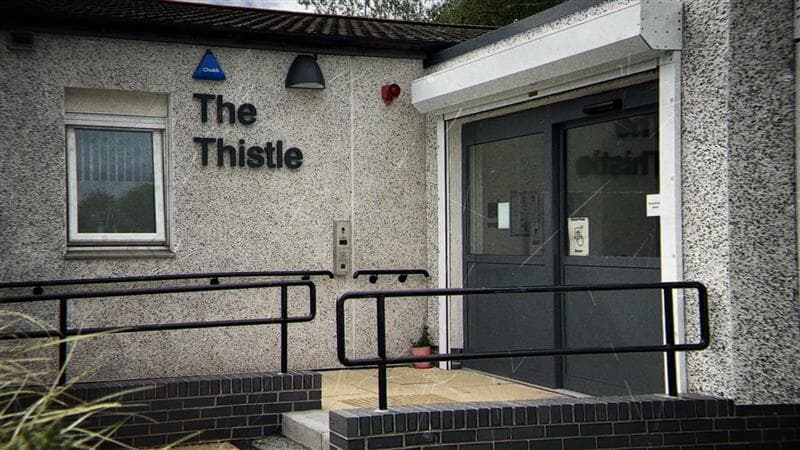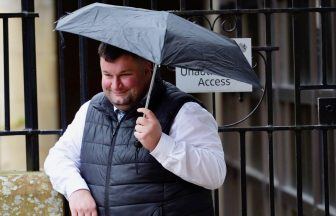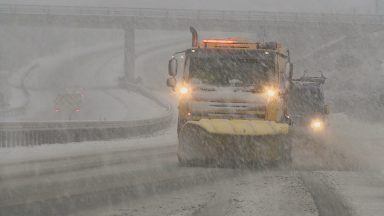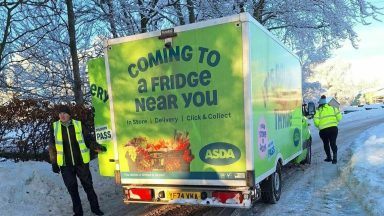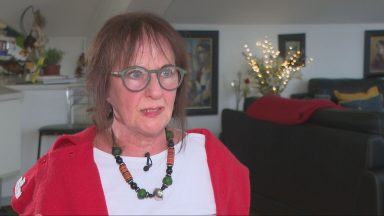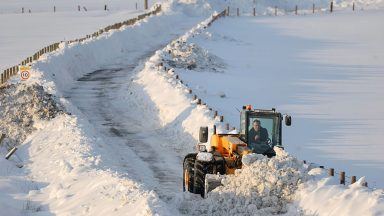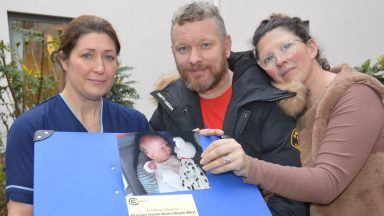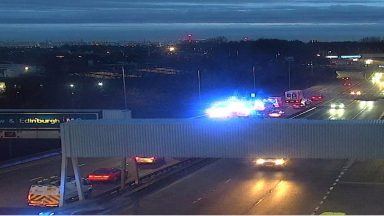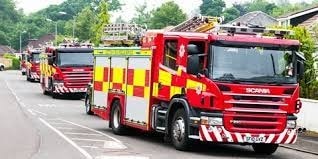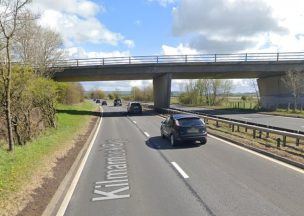STV News has been given exclusive access to the UK’s first drug consumption room six months after it opened.
For Adam, a heroin and cocaine user in his 40s, visiting the consumption room has become part of his daily routine.
He’s well-known to staff and agreed to speak to STV News as he sipped a freshly made hot chocolate in one of the meeting rooms set aside for users before they use the injecting space.
“If this wasn’t here, then I’d be down a lane or in the bushes where police or someone else might see me,” he said.
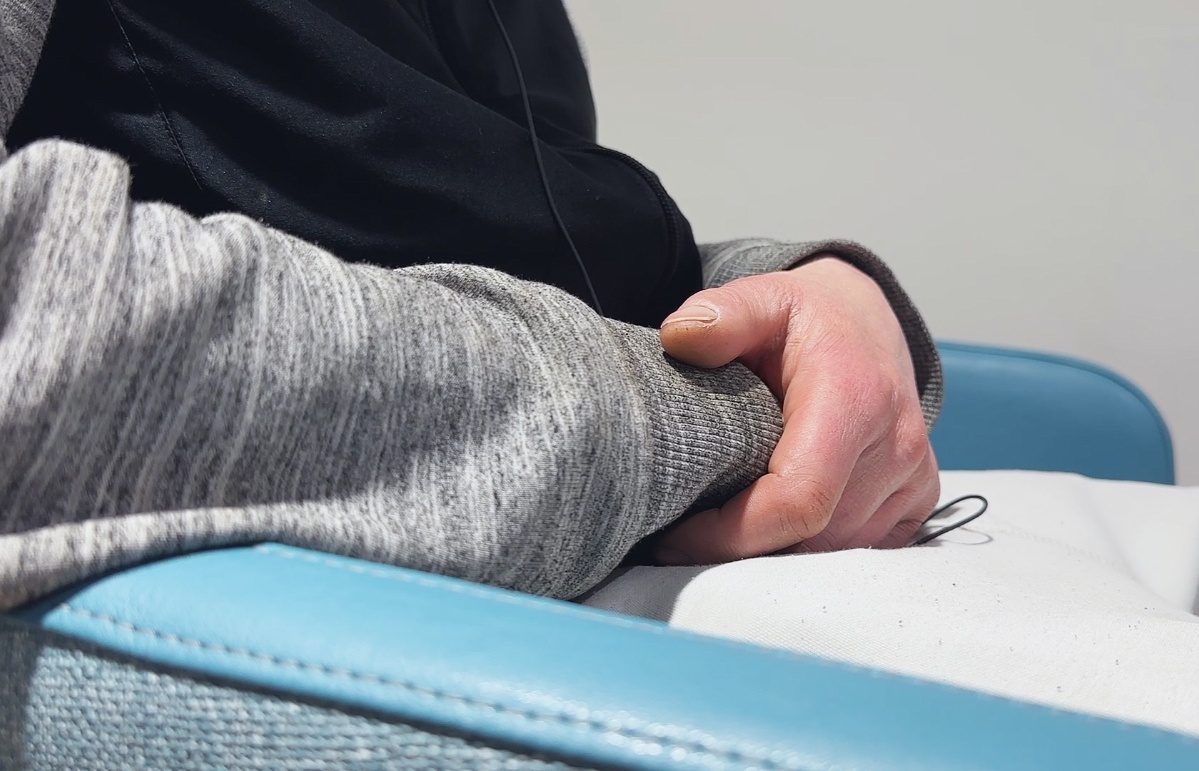 STV News
STV News“I’d probably, to be honest, have taken a hit in a car park, well, I’d have taken quite a few hits.”
Adam, not his real name, has overdosed 16 times in the 20 years he’s been taking drugs. While seeing others overdose is nothing new to him, the immediate medical response people receive while using the UK’s first drug consumption room is revelatory.
“There have been a few people overdosing in here right in front of me,” he said.
“Boom, [the staff] are on it straight away and saved them. If that had happened outside, by the time the ambulance would have gotten here, they would have been gone.”
Inside the consumption room, those using the injecting booths must follow strict rules – they can’t share drugs and can only bring what they intend to take.
“We have all experienced overdoses multiple times now”
Siobhan Mccarry, senior addiction nurse
The bright and clinical “using space” with about a dozen mirrored booths is watched over by nurses who can advise addicts on everything from the right size of needle to use (there are several to choose from) to finding a vein, or how best to look after problem wounds – often resistant to healing due to persistent injecting.
But their most important role is to be on standby for when people overdose.
In April, a batch of so-called “green” heroin was in circulation – so potent, nurses dealt with 13 overdoses that month.
“We have all experienced overdoses multiple times now,” Siobhan Mccarry, a senior addiction nurse, told STV News.
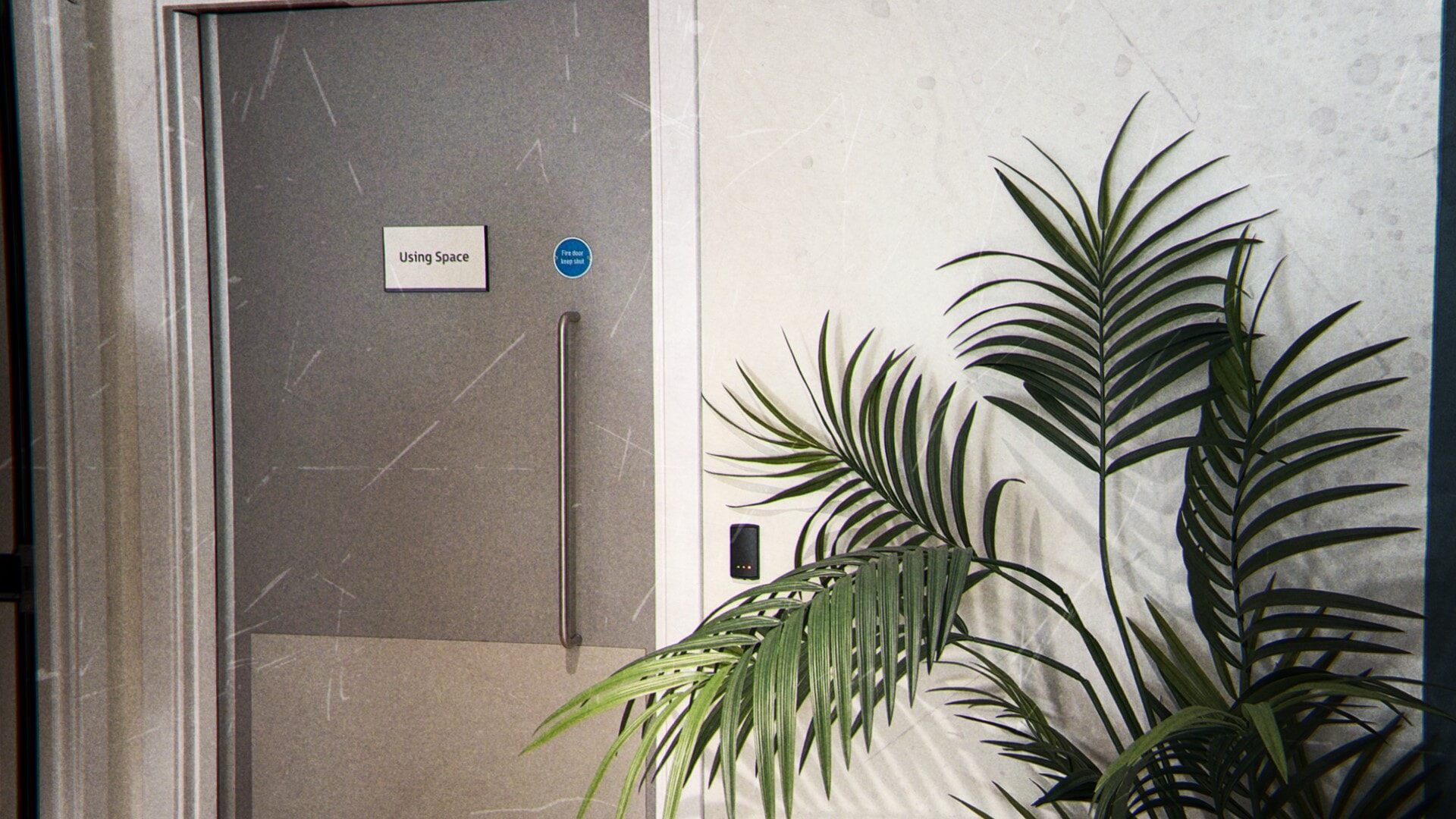 STV News
STV News“Everyone is hands-on and gets involved. People would have died if they weren’t here, so that’s another big win for us. They are here, supported, and we have managed to save them.
“We make sure that they have got a lot of support in place and understand the risks going forward of injecting after an overdose.
“Some people will still come in and inject again, and we support them with that and have a chat at registration the next time they come in to make them aware of the risks.”
While overdoses dipped back to a handful the following months, staff said they dealt with the same number of overdoses in this first week of July as they did throughout the entirety of May.
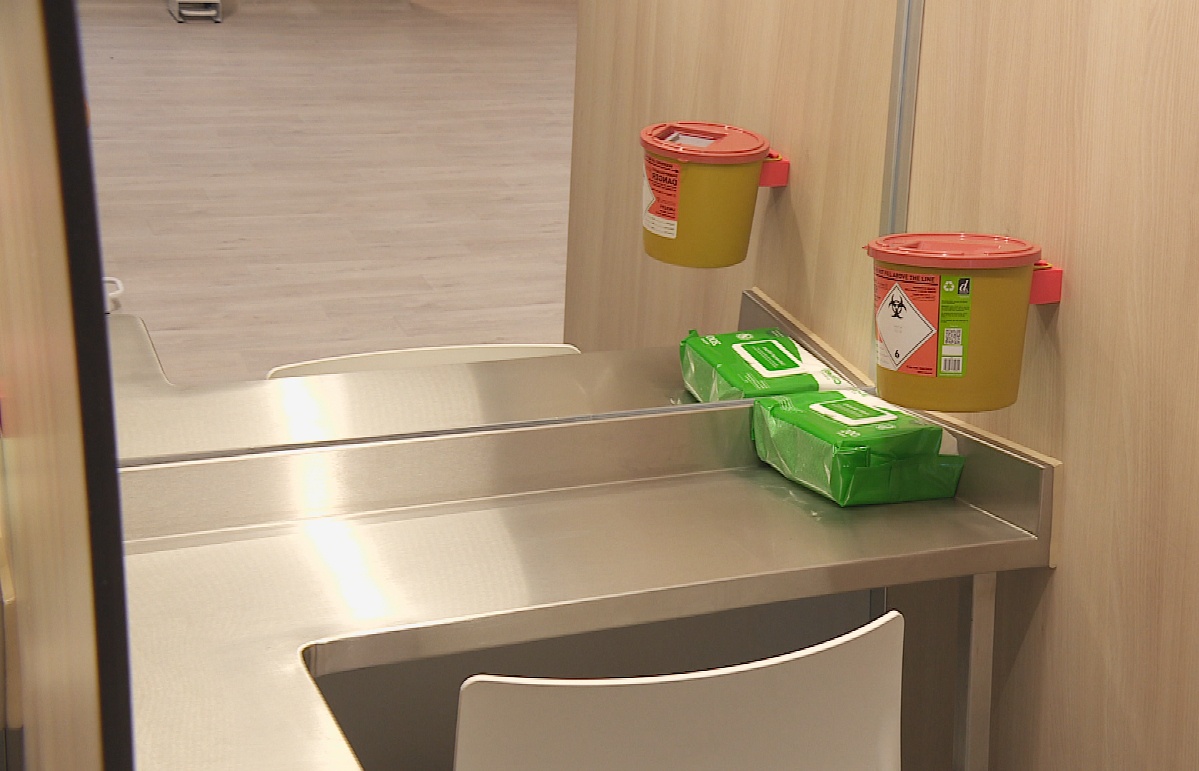 STV News
STV News“With this bit of a spike, I think people are maybe also taking street valium and mixing drugs,” Siobhan said.
“Poly drug use makes it harder to manage an overdose if we don’t know what somebody’s taking before they’ve come in.”
In June, more than 70% of those injecting under supervision at the Thistle took cocaine. Some mix it with heroin.
Staff at the Thistle believe a drug checking service would help identify what is in the street-bought substances brought into the facility. A license for this proposal remains with the Home Office.
Six months of the Thistle ‘have been worth every penny’
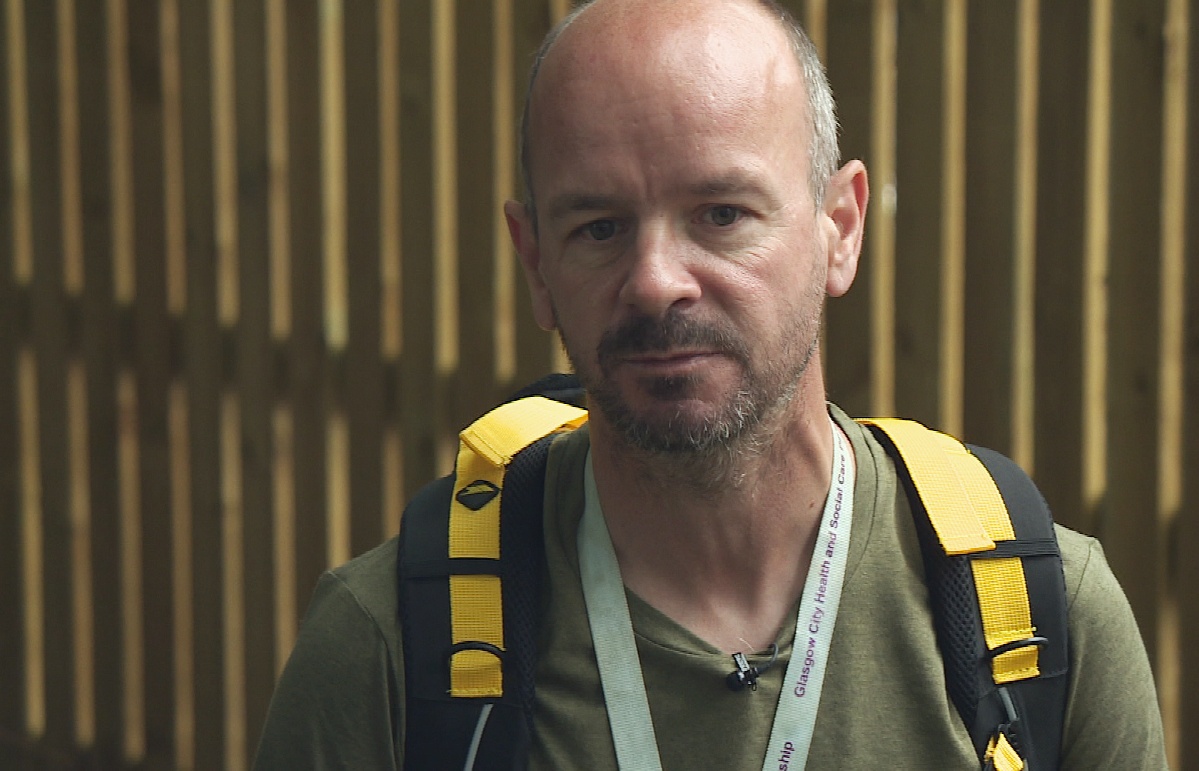 STV News
STV NewsOut in the surrounding area of Calton, Thistle harm reduction worker Davie Findlay walks a daily patrol.
It’s a well-trodden beat around areas known for public injecting – the corner of a supermarket car park across the street, bushes on wasteland near the railway line, and an abandoned school opposite where kids play and a recovery group meets for a garden club.
“When we come into these places, your biggest fear is always finding somebody overdosed, you know what I mean?” Davie said.
The ground at one site, on private waste ground near the Thistle, is strewn with condoms, needles, spoons, and other drug paraphernalia.
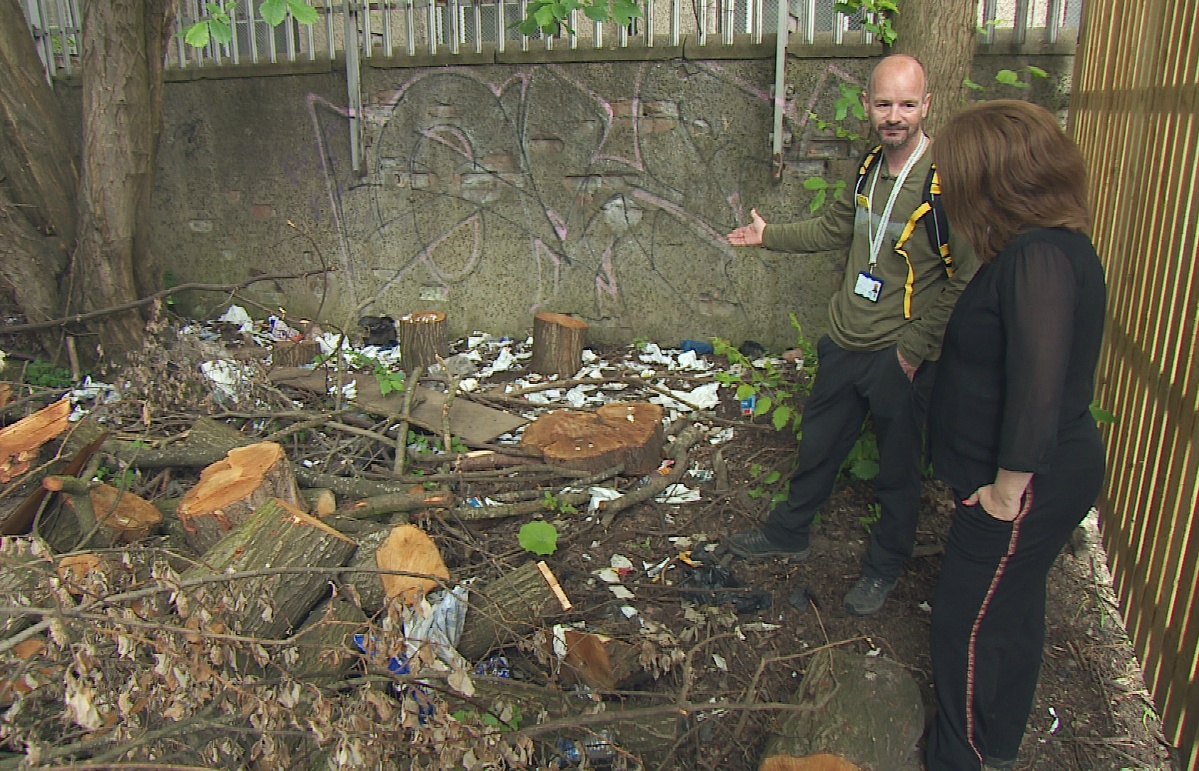 STV News
STV News“There is a lot of discarded injecting equipment here, in terms of needles, barrels and stuff, pretty fresh,” Davie tells STV News as he inspects the ground.
“In this area here as well, you can see there’s spoons and stuff, looks like all set up where people have been using recently,” he said.
Davie is also on the lookout for addicts he can persuade to come to use the Thistle – a service he’s adamant has saved lives.
“It’s very early days, but if it had never opened up, those 30-plus people who overdosed in the Thistle would be dead,” he said.
“As far as I’m concerned, no matter what happens for the next two-and-a-half years that it’s got funding, the six months up to this point have been worth every penny.
“One of them came in again last night, who had been very reluctant to use the service in the past. He used it about six weeks ago, and he overdosed when he came in. He’s been coming back ever since.
“It would be naive to think we are going to get every single injecting drug user to come into Thistle but if we can make a massive dent in the number who are, then it’s all worth it.”
A total of 348 people have used the consumption room since it opened in January.
While staff are pleased with the initial uptake of the service, there’s still a steep road ahead.
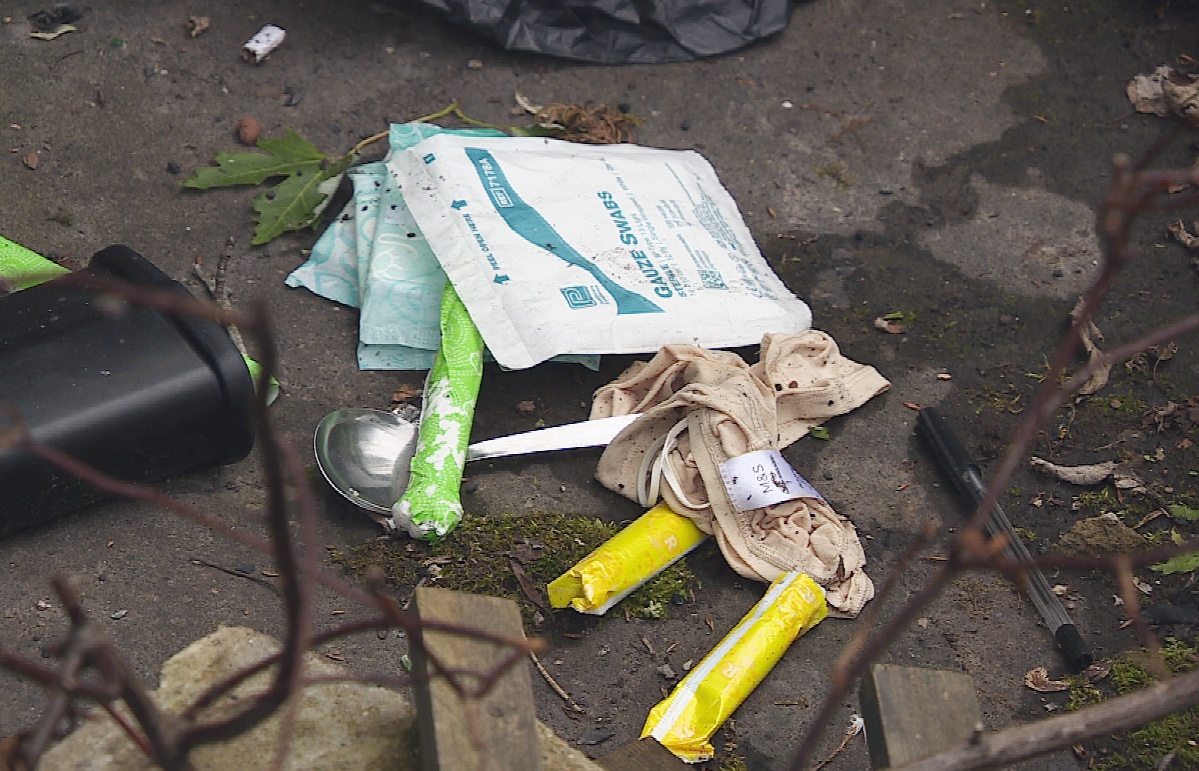 STV News
STV News“People who’ve been injecting for years have got into the habits of how they inject and what the process is, and to then come into a service where they’re injecting in front of a professional worker is alien,” Davie said.
“It’s a very strange thing for a lot of them and difficult for a few of them to overcome that barrier.”
Last month, more people used the Thistle for the wraparound help it offers – wound care, mental health and housing support, and hygiene facilities like showers and a laundry – than for its safe injection room.
For Adam, who first tried heroin when he was 14, the consumption room is more than just a place to inject.
“I didn’t think I’d see a place like this in my lifetime,” he said.
“It makes me feel like people actually care. I have never accepted help. People used to tell me about stuff and I’d say no and just do my own thing.
“If this place wasn’t here, I’d probably be in jail. It would be bad. I wouldn’t have clean tools and I have to travel further afield. It does annoy me when people take a hit and then leave their stuff lying. If you hit up, clean up.”
‘I would not choose to live here’
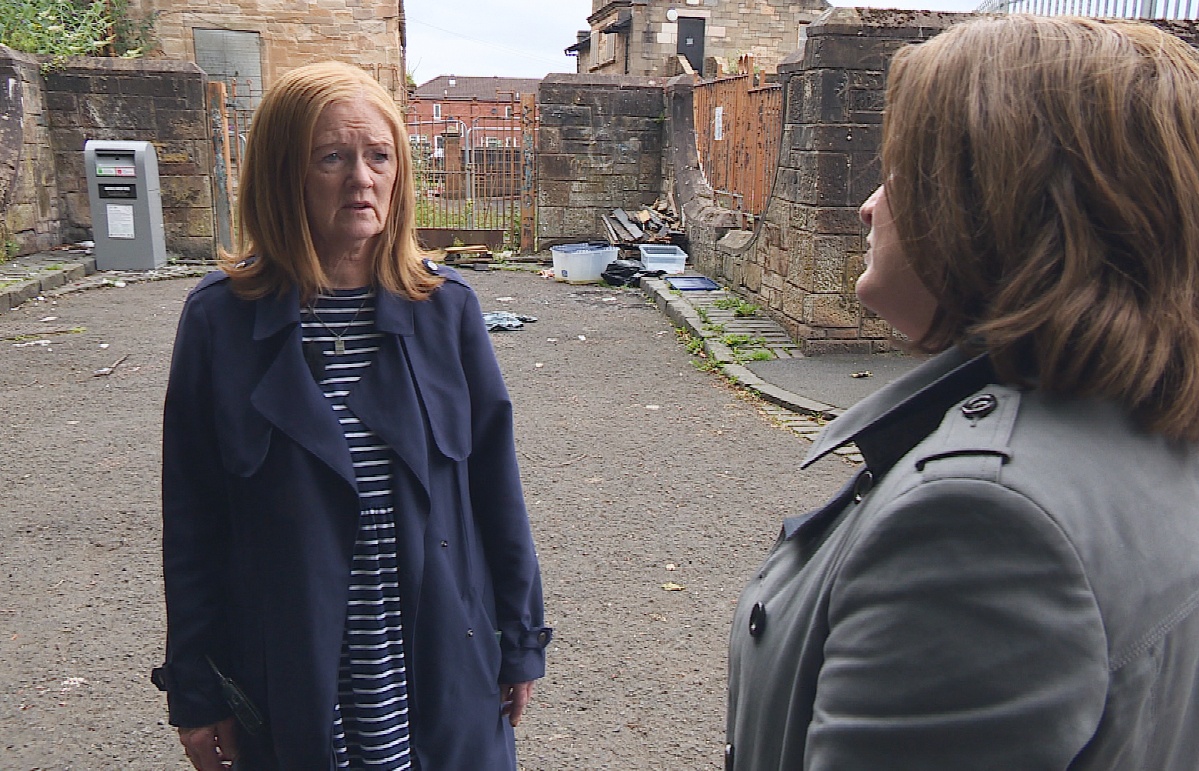 STV News
STV NewsAfter heated community meetings with frustrated Calton residents who say public injecting and drug-related litter has increased since the opening of the Thistle in January, Glasgow City Council deployed daily cleansing teams and installed two sharps bins in areas known to be popular sites.
Linda Watson, a lifelong Calton resident, has been a driving force behind the campaign against what she says is a public safety issue.
“We’re under no illusion that there wasn’t any kind of problem in this area, but absolutely nothing to this extent,” she told STV News.
“If I wasn’t born here, and I wasn’t here all my life and I wasn’t this age now, I wouldn’t be living here”
Linda Watson, lifelong Calton resident
“I’ve lived here all my life and, until this happened, I didn’t see anyone standing injecting in front of me. Never. And neither did my children.
“Now they’re putting in sharps bins and they are very little being used as far as we can see… Does that become the norm?
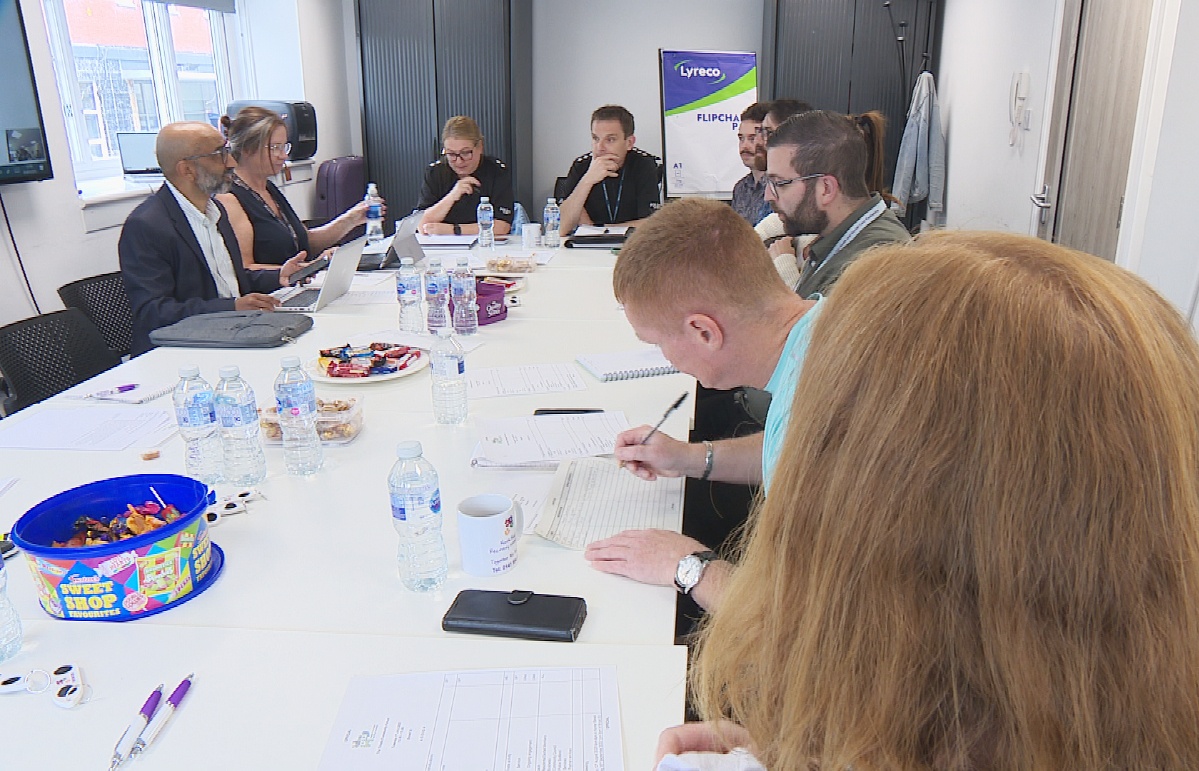 STV News
STV News“They’re just coming back the next day and doing it again, so the council workers have got to come back. How long can you sustain council workers every day, having to come out and lift these needles?”
Councillor Alan Casey, who convenes Glasgow City Council’s addiction services, insists that the Thistle was opened to tackle the very issue of public injecting in the area.
“I do feel the frustration of the community,” he said.
“We’ve put significant investment in, we’ve got a specific action plan, we’ve got teams who are operating there on a daily basis now doing daily patrols.
“There’s a whole load of regeneration happening in and around the Calton, so hopefully as the months progress, people will start to feel and see the difference that the Thistle is making and indeed the wider investment the council is making in the community.
For Linda, the improvement can’t come soon enough – she feels part of a three-year experiment that she and fellow residents did not agree to with the daily reality taking its toll.
“If I wasn’t born here, and I wasn’t here all my life and I wasn’t this age now, I wouldn’t be living here. I would not live here,” she said.
Follow STV News on WhatsApp
Scan the QR code on your mobile device for all the latest news from around the country


